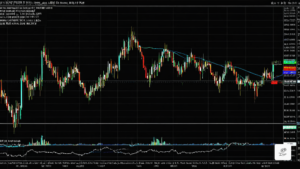The Power of Leverage in Financial Markets

Exploring the Concept of Margin in Futures Markets
One of the most striking peculiarities of futures markets is the possibility of using leverage. This mechanism allows traders to commit a small amount of capital to execute significant operations in an asset. Leverage is materialized through the futures margin, a crucial aspect in the world of trading.
The Significance of Margin in Futures Contracts
In simple terms, the futures margin represents the minimum capital required in a trading account to open a position in futures contracts, whether buying or selling. This margin is usually a fraction of the total value of the contracts and varies according to the market and the duration of the trade.
Leverage: A Double-Edged Sword
Although leverage can magnify gains with small movements in the price of the underlying asset, it can also result in substantial losses. It is important to understand that potential losses can exceed the amount of initial margin, highlighting the importance of managing risk in this environment.
Distinction between Futures Margin and Stock Margin
It is fundamental to differentiate between the concept of margin in futures markets and in stock markets. While the margin in stocks allows you to borrow against assets in the stock market, the futures margin requires a deposit to maintain a position without owning the underlying asset.
Margin Types in Futures Markets
In futures markets, there are two types of margins: the initial margin, which is required to open a position, and the maintenance margin, which is required to cover potential losses. These margins vary depending on the market and the contract, and they play a crucial role in risk management.
Margin Call: What Does It Entail?
When the funds in the trading account fall below the maintenance margin, a margin call occurs. In this scenario, the trader must deposit more funds to restore the initial margin level. Otherwise, they may face position reduction or closure by the broker.
The Math Behind Futures Margins
Futures margins are determined using algorithms such as the SPAN margin system, which evaluates the potential risk of a portfolio across different market scenarios. This statistical approach ensures that losses are covered in the vast majority of cases, contributing to market stability.
Advantages and Disadvantages of Margin in Futures
Margin trading in futures provides protection against excessive losses and ensures the fulfillment of contractual obligations. However, the need to cover daily losses can be a challenge for traders, although it is an integral part of operating in these markets.
Conclusion
Futures margin is a fundamental pillar in the world of trading, providing security and liquidity in a highly leveraged environment. Understanding how it works is essential to effectively manage risk and take advantage of the opportunities offered by financial markets.




